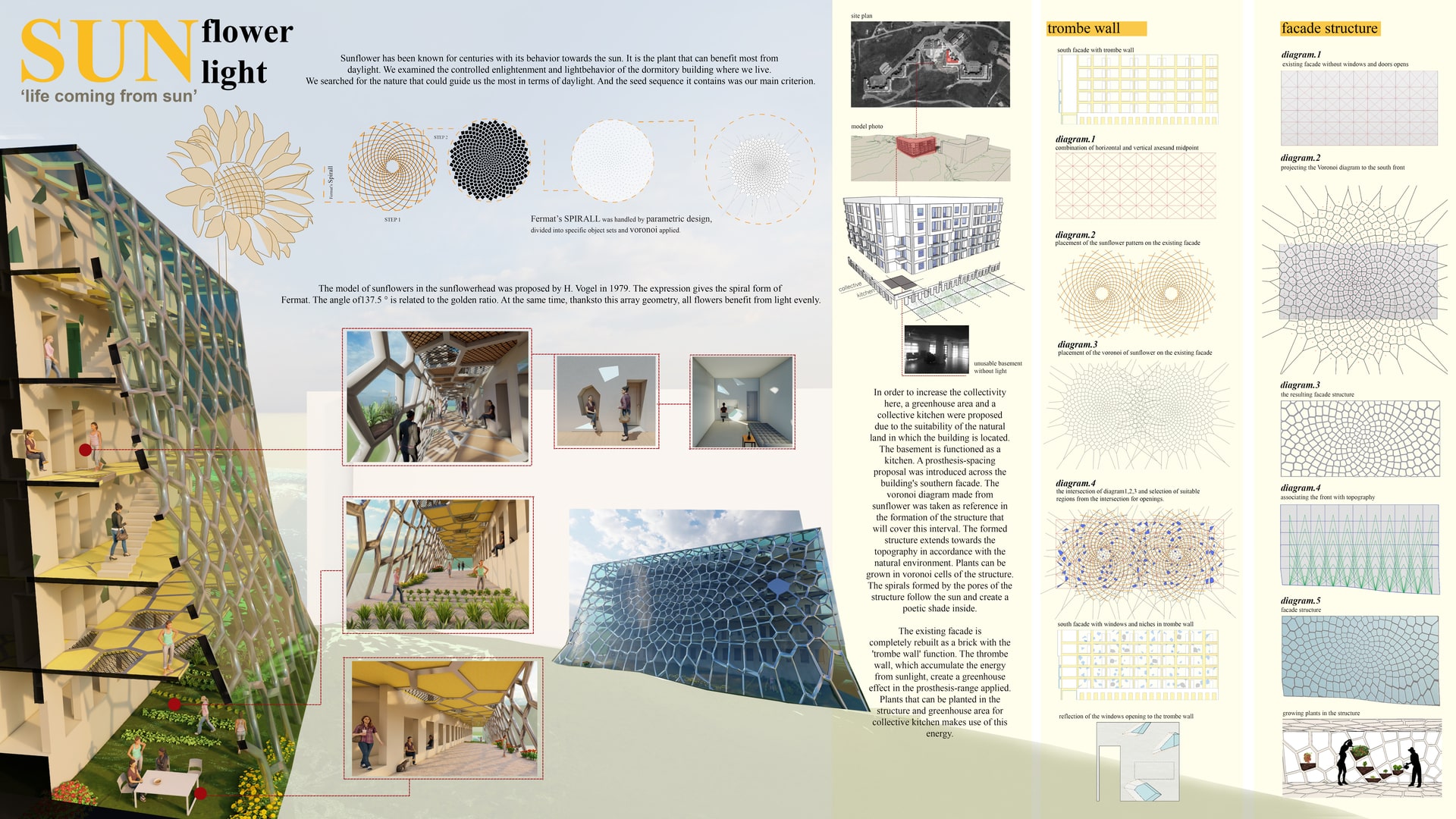Project Description
The sunflower plant has developed its evolutionary process by turning to the sun in order to obtain maximum energy. This development is vital in order to 'survive'. The relationship we establish with daylight is also vital for us. In this case, by using ecological information in sunflower, a balanced design has been created. The pattern of sunflower seeds is taken as reference. A voronoi diagram was created from these nuclei and applied to the design. Gebze Student Dormitory building was chosen for the application. This building faces the southern facade and receives much sunlight during the day. However, the basement reserved for students does not get enough light and is not in demand. In order to increase the collectivity here, a greenhouse area and a collective kitchen were proposed here due to the suitability of the natural land in which the building is located. The basement is functioned as a kitchen. A prosthesis-spacing proposal was introduced across the building's southern facade. The voronoi diagram made from sunflower was taken as reference in the formation of the structure that will cover this interval. The formed structure extends towards the topography in accordance with the natural environment. Plants can be grown in voronoi cells of the structure. The spirals formed by the pores of the structure follow the sun and create a poetic shade inside. The proposal to rebuild the facade as a completely brick, with the function of 'trombe wall' is presented. The trombe walls, which accumulate the energy from sunlight, create a greenhouse effect in the prosthesis-range applied. Plants that can be planted in the structure and greenhouse area for collective kitchen makes use of this energy. The floors are designed as a reflection of voronoi cells to ensure design integrity. As some cells are in the form of a grid, air flow is provided along the facade and it is aimed to bring more sunlight to the trombe wall. Minimum space must be opened as it will hold energy within the trombe wall. While determining the window gaps, the sunflower diagrams are intersected and minimum gaps are taken as reference. The windows are designed to be angled and expand inside to distribute the light inside. The niches formed on the trombe wall were placed on the prosthesis-spacing side and to the inside of the rooms. Niches in the wall increases interaction and action potentials. As a result, an environment where dormitory students can spend time together and make agriculture and benefit directly from the blessings of daylight is presented. Today, with the increase in urbanization, the importance of vertical agriculture in buildings has increased. You do not need to go too far to reach the nature that was created as a prosthesis in this interval. Nature is wherever the sunlight can reach, as long as we know how to take advantage.
